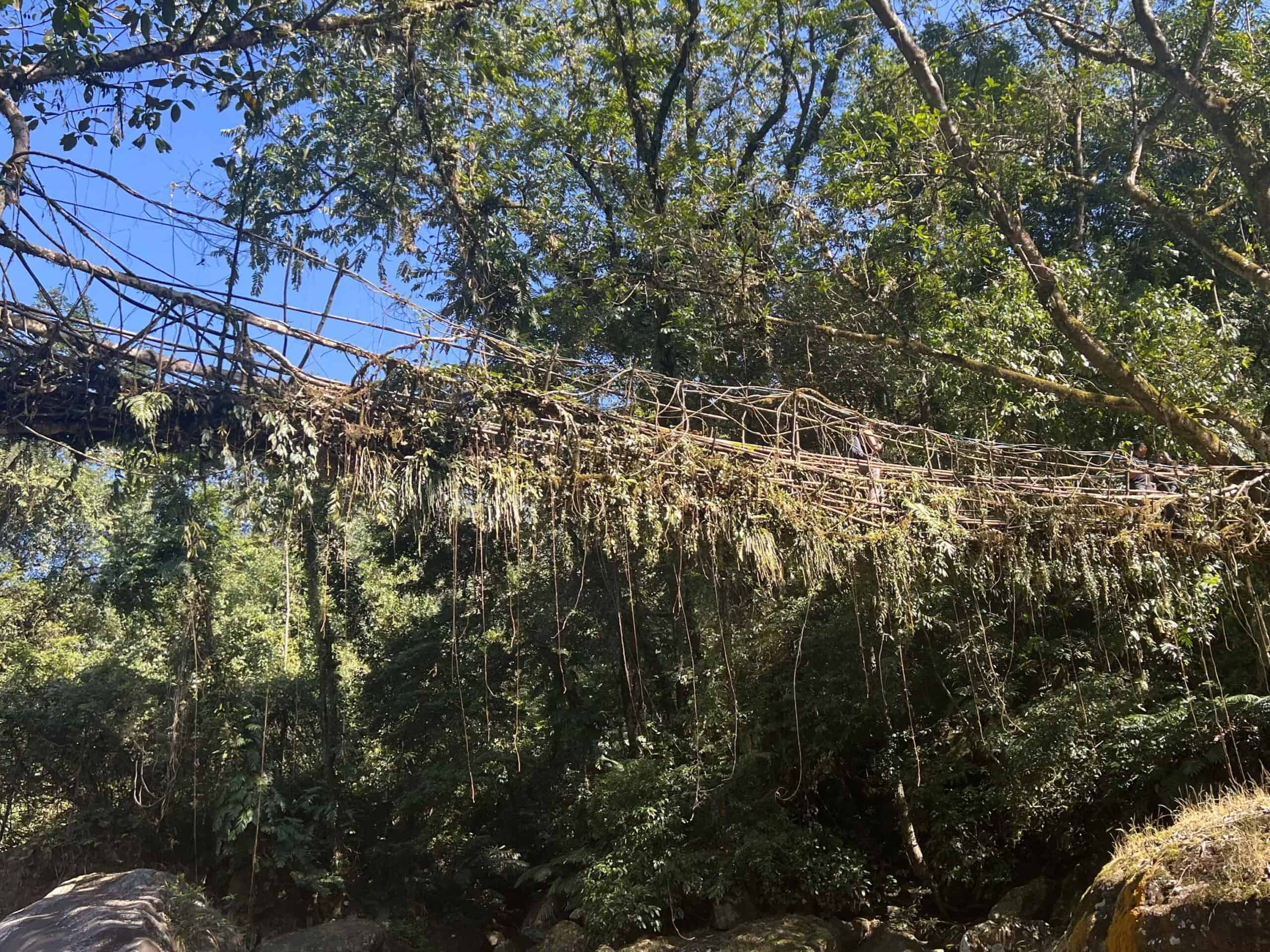Don’t Miss This Incredible Hike To The Living Root Bridges In Meghalaya
Are you planning to hike to the Living Root Bridges in Meghalaya? There’s a lot you should know!
The living root bridges are the highlight of Meghalaya. This Indian state, known as the abode of the clouds, receives large amounts of rainfall during the monsoon season. So indigenous tribes got creative and made bridges out of tree roots to cross rising rivers and streams during rainy season.
These magnificent living root bridges are worth a hike to see firsthand. In order to visit a couple of the famous living root bridges located in the village of Nongriat, you can do a 2-hour round trip hike to a single decker bridge or take on the challenging 5-hour roundtrip hike to the double decker bridge.
Hiking to the Living Root Bridges in Meghalaya
Here’s all the steps to plan for during your trek to the living root bridges.
Stay overnight in Cherapunjee
I recommend taking on this challenging hike during a trip to Cherapunjee (Sohra), where you can spend a 2-3 days exploring surrounding waterfalls and caves.
Plan for the hike to the living root bridges to take a solid 6 hours of one of your days in Cherapunjee. This includes the drive to Tyrna Village, hiking to both the single decker living root bridge and the double decker living root bridge, the hike back, and returning back to your accommodation.
Some people recommend this hike as a day trip from Shillong. This is possible, however, it would be a very long and tiring day. It takes about 2.5 hours to reach Tryna Village (where the hike starts) from Shillong, depending on traffic and road conditions. Then you’ll have a 5 hour roundtrip hike. And finally, you’d have to drive back another 2.5-3 hours.
If you are short on time in your Meghalaya itinerary, you can make this hike work as a day trip from Shillong. Otherwise I’d recommend spending at least one night in Cherapunjee (Sohra).
Drive from Cherapunjee to Tyrna Village
The trailhead for the hike to the living root bridges starts in Tyrna Village. It’s about 12kms and a 25 minute drive to reach Tyrna from Cherapunjee, depending on where you are staying.
You’ll need to park in one of the small lots nearby or if you arrive after the rush in the morning there will be people directing you to park on the side of the road. It’s a small fee to park.
Start your hike at Tyrna Village
Near the trailhead, there will be local people selling bamboo walking sticks at the start of the hike. I recommend paying for one and then you can return it at the conclusion of the hike. I found a walking stick to be super helpful with all the stairs.
Descend stairs for about 45 minutes to an hour. You’ll mostly be walking down stairs with some flat stretches. Then you’ll reach a small cluster of houses. There will be a couple people collecting the fee to continue down to the single decker living root bridge. Be sure to have cash on hand for this payment.
After you pay the fee it’s only a short couple minute walk until you see the incredible bridge. You may have to wait in line to get your chance to cross it and take a pictures.
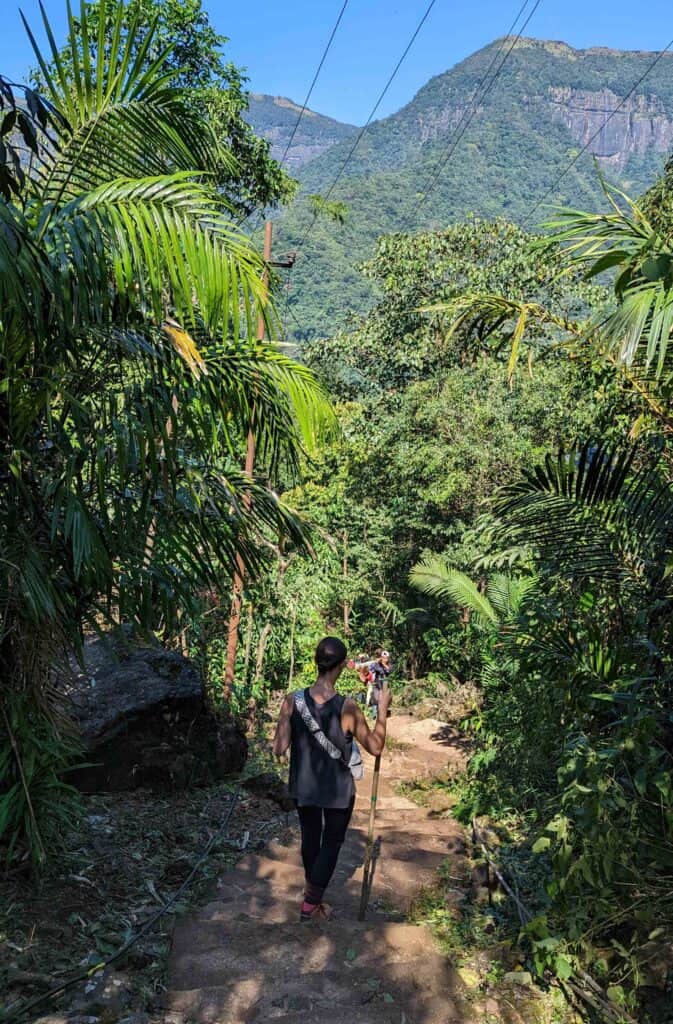
Stop at the Single Decker Living Root Bridge
Take a breather as you wait your turn to cross the bridge. Once you cross, find a spot on the rocks beneath it to admire the intricate work while you rest.
I recommend spending only about 30 minutes here if you are continuing onto the double decker. You’ll want to enjoy the nature but not wait too long. You’ll need to cross back over the bridge to where you came from to continue the path to the double decker.
Alternatively, if you aren’t up for the challenge of reaching the double decker, you could let the single decker be your final destination and return to your car from here. It would be about an hour back up to Tyrna Village from here (where you parked your car or were dropped up by a taxi).
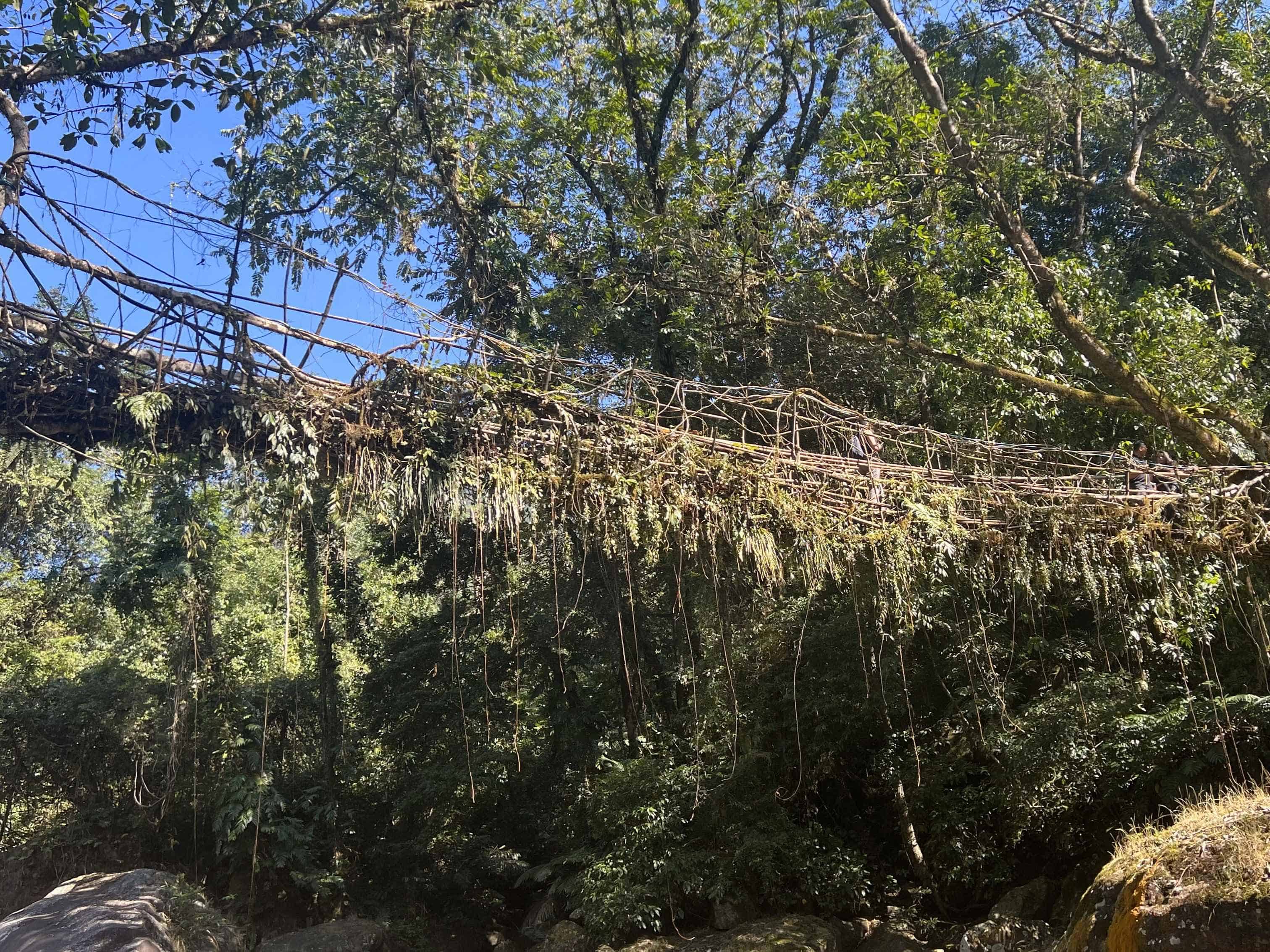
Continue on to the Double Decker Living Bridge
You’ll need to continue for about another hour to reach the double decker living bridge, located in Nongriat. There are less stairs in this portion of the hike (though there are still some stretches with stairs).
You’ll also reach and cross two metal wire suspension bridges running over rivers.
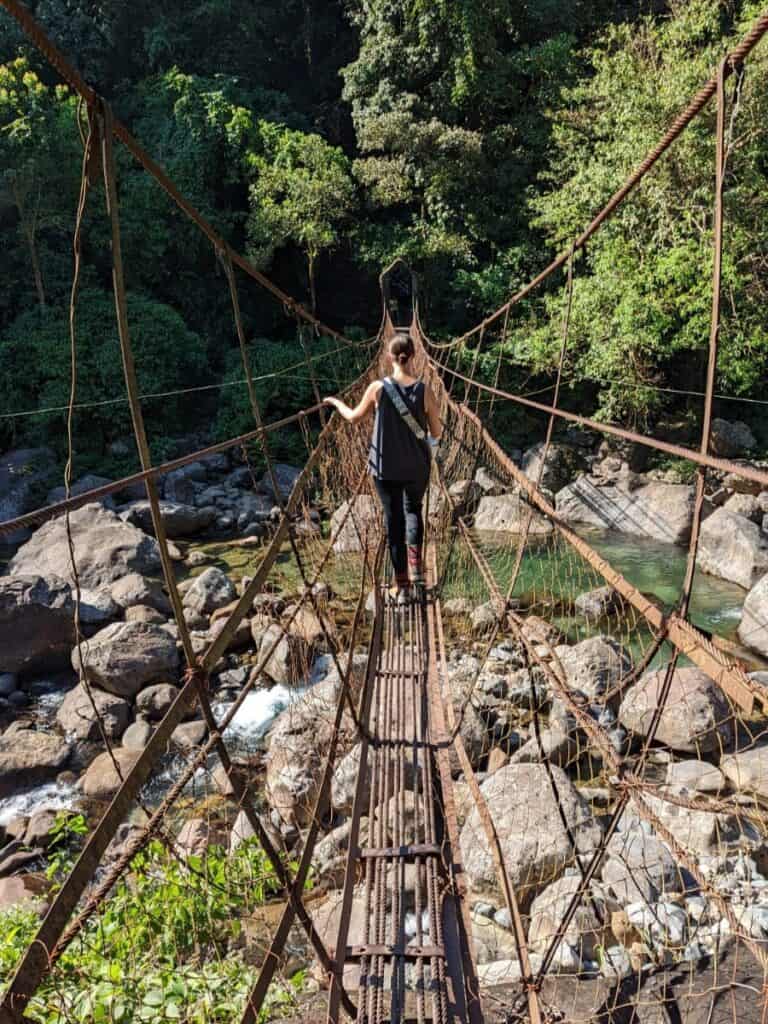
Enjoy the destination
You made it! There will be a gathering of people, locals and tourists around the double decker bridges.
Find a spot to enjoy a peaceful rest near the river and snack on some maggi or chips. There are a couple huts selling refreshments. Again, be sure you have cash with you for this.
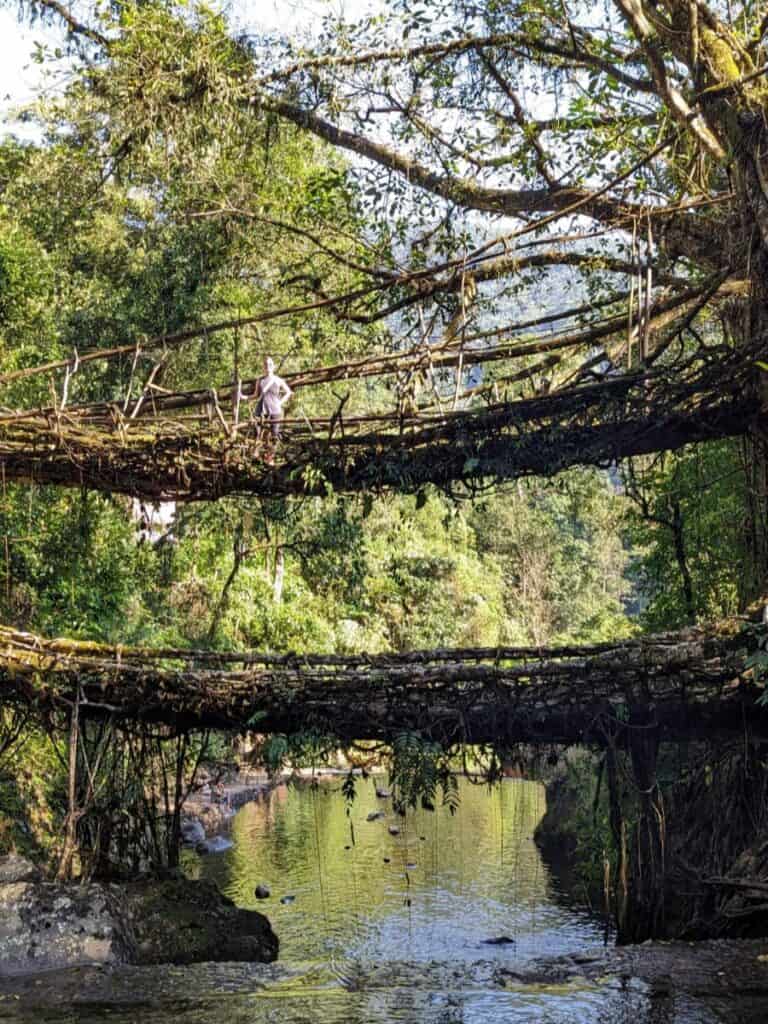
Option to continue to Rainbow Falls
If you take the option to continue your hike to Rainbow Falls, I recommend you plan to stay overnight in the Village of Nongriat. It’s a difficult feat to get all the way to Rainbow Falls and back up to Tryna in one day.
There are a number of home stays with basic facilities where you can stay the night in Nongriat. Then you can take on the ascent back up to Tryna after a night of rest.
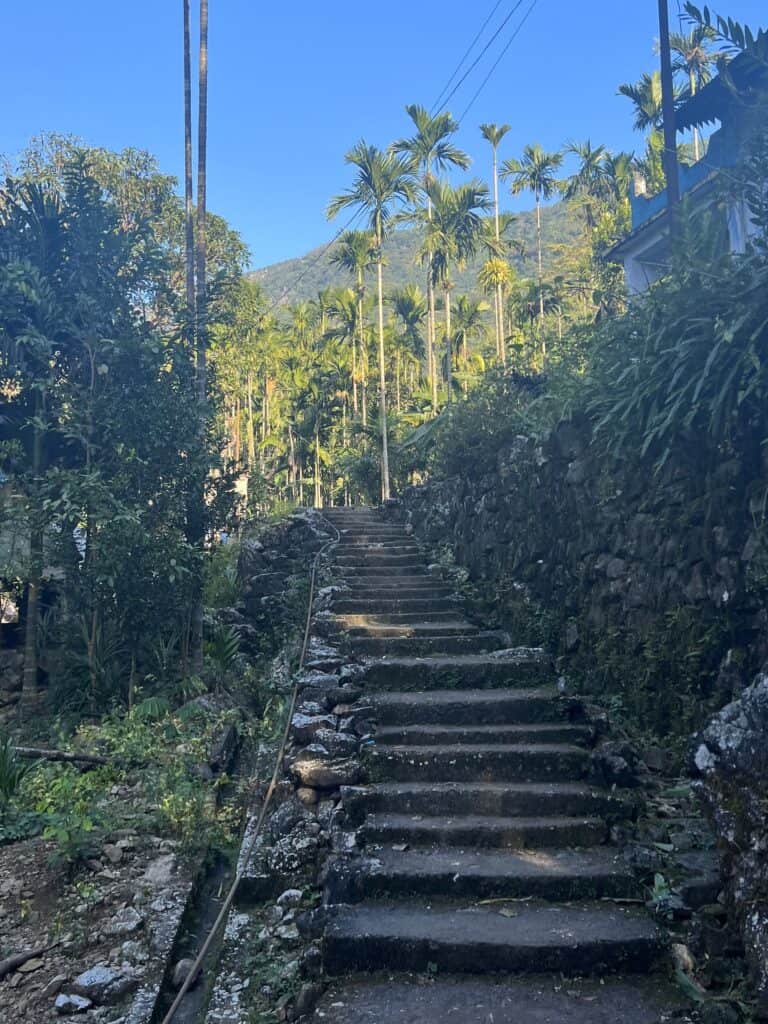
Start your return journey
Now for the hard part! The return journey can be a bit arduous. You’ll need to climb back up all those steps you descended.
My best advice is to take the ascent slow and consistent. Don’t push yourself too hard to the point where you need to take a lot of breaks. I recommend keeping a slower steady pace with only a couple breaks. The more you stop, the harder it is to keep going up the stone stairs.
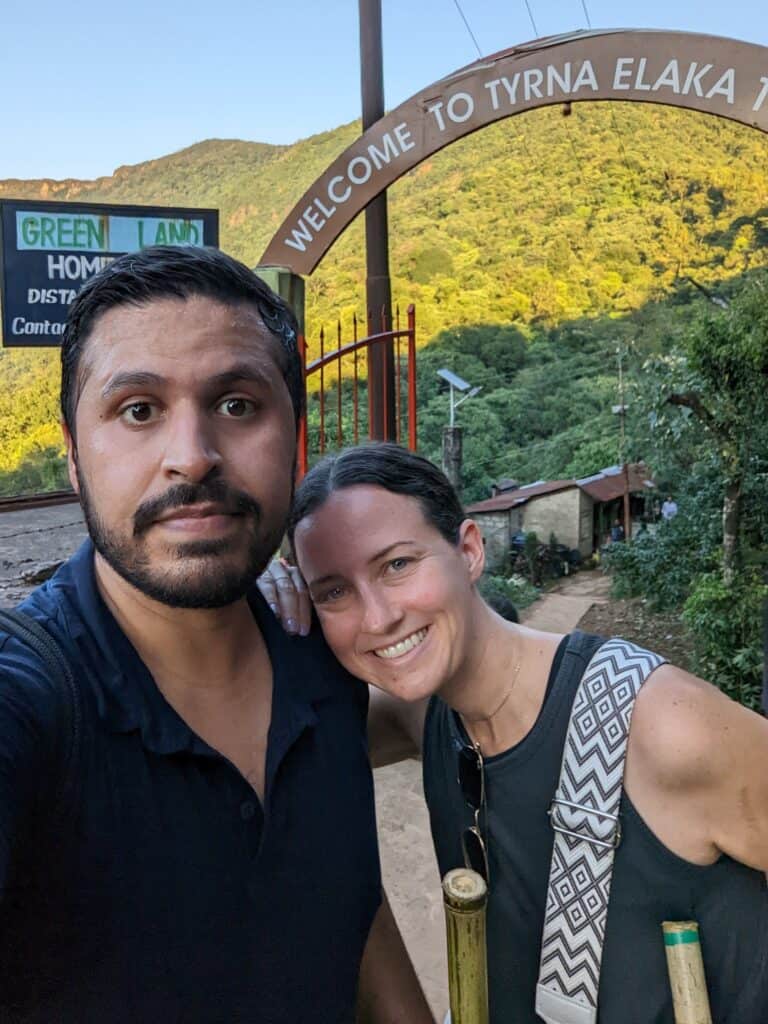
Tips for Hiking to the Living Root Bridges in Meghalaya
✅ Plan for a full day excursion. You’ll need to drive to Tyrna village and then commence your hike from there. The full trek take about 5-6 hours roundtrip.
✅ Respect the environment. The living root bridges are an integral part of the ecosystem and the local community. It’s crucial to stick to the paths, not litter (carry back all your trash), and not cause any harm to the bridges or surrounding nature.
✅ Wear comfortable, breathable clothing and sturdy trekking shoes with good grip.
✅ Carry water, some energy-boosting snacks, and rain gear (if you’re visiting during or around the monsoon season).
✅ Rent a walking stick. There will be local people selling bamboo walking sticks at the start of the hike. I recommend paying for one and then you can return it at the conclusion of the hike.
✅ Bring a little cash. You can buy water and snacks at small huts along the way.
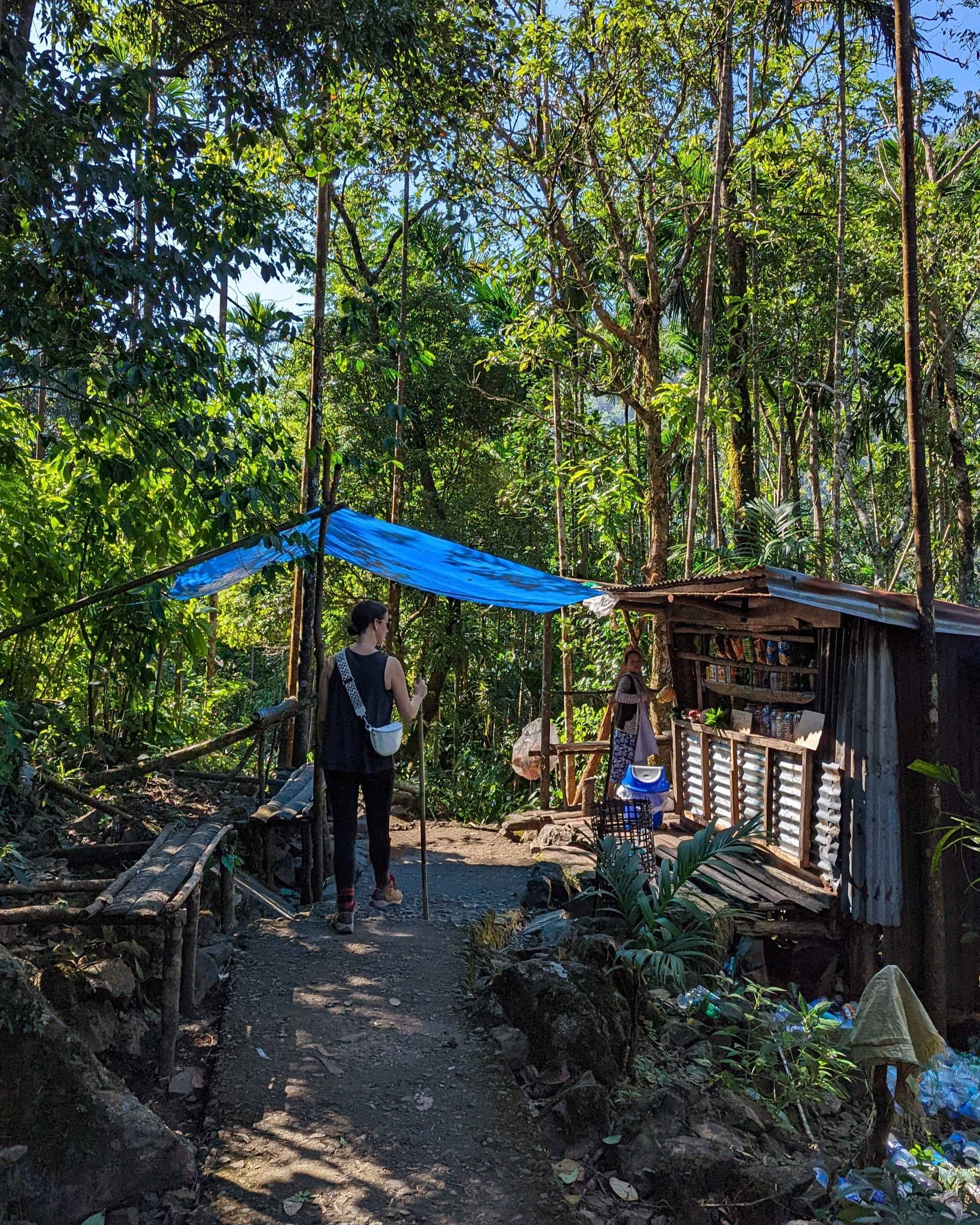
Where to Stay Nearby the Living Root Bridges
I recommend staying in Cherapunjee and setting aside a full day to hike to the living root bridges.
📍Polo Orchid Resort Cherrapunjee: This is the nicest resort in the area. It is highly recommended and well reviewed. If you’re looking for a relaxing getaway in Cherapunji, this is the perfect place to stay.
📍Jiva Resort: This is where I stayed and it’s a nice little resort with amazing views.
Reminder: if you plan to also hike to Rainbow Falls (another hour after the Double Decker Living Root Bridge), I recommend planning to stay the night down in the Village of Nongriat. You won’t find any hotels there. It will be basic homestays.
FAQs: Living Root Bridges in Meghalaya
Answering some important questions about the Living Root Bridges.
What is a living root bridge?
Because Meghalaya is one of the wettest places on planet earth, rivers swell during the monsoon months, making certain areas uncrossable. So the indigenous tribal communities have implemented a system that involves joining the roots of large trees over rivers and streams.
Over hundreds of years the tree roots have developed into the complex strong bridges you see today. The indigenous tribes have been making these living root bridges for over 250 years. They are a great example of harmony between human ingenuity and nature.
How long is the hike to the living root bridges in Meghalaya?
If you’re hiking to the popular living root bridges near Cherapunjee, there’s a couple route options you can take to reach the bridges in the village of Nongriat. The timing does depend on your physical fitness. There are over 3,500 stone steps to ascend and descend which takes quite a bit of strength to navigate quickly.
- Single Decker Living Root Bridge: This route takes about 2 hours roundtrip.
Start at Tyrna Village and hike down to the single decker living root bridge. - Double Decker Living Root Bridge: This route takes about 4-5 hours round trip. Start at Tyrna Village and hike down to the single decker living root bridge, continue onto to the double decker living root bridge. This route takes about 4-5 hours round trip.
Where are the living root bridges in Meghalaya?
The most famous of the living root bridges in Meghalaya are located nearby Cherapunjee (Sohra) in the village Nongriat. You can hike down to the bridges. There’s a single decker bridge that’s a shorter hike (about 2 hours roundtrip) and a double decker bridge that requires a moderately difficult 4+ hour hike roundtrip.
There’s another popular living root bridge near the village of Mawlynnong, which was once named Asia’s Cleanest Village. It’s located in Nohwet village and is probably the most accessible living root bridge. If you plan a visit here, don’t miss the nearby Umngot river, known for its crystal clear waters.
The Mawkyrnot-Rangthylliang living root bridge is known for being the longest natural bridge in the world, at over 53 meters long. You can hike from Mawkyrnot village to reach this bridge.
In addition to the ones I named here, there are many other living root bridges throughout Meghalaya including some located in more remote areas that may require a guide to access.
What’s the best time to visit the Living Root Bridges in Meghalaya?
The monsoon season (June to September) brings lots of life to Meghalaya, turning it into a lush paradise. However, the trails can be slippery. If you prefer safer trekking conditions, aim for after the monsoon, around October to November, when the landscapes are still very green, and it doesn’t rain as much. You can also easily do the hike from December to March, though the landscape may be less green.
I did the hike in late October and it was beautiful perfect weather with sunny blue skies and not too hot.
Do I need a guide for the Living Root Bridge hike in Meghalaya?
No, it’s not necessary to use a guide. The path is clearly marked and locals will help direct you if you get turned around in the villages.
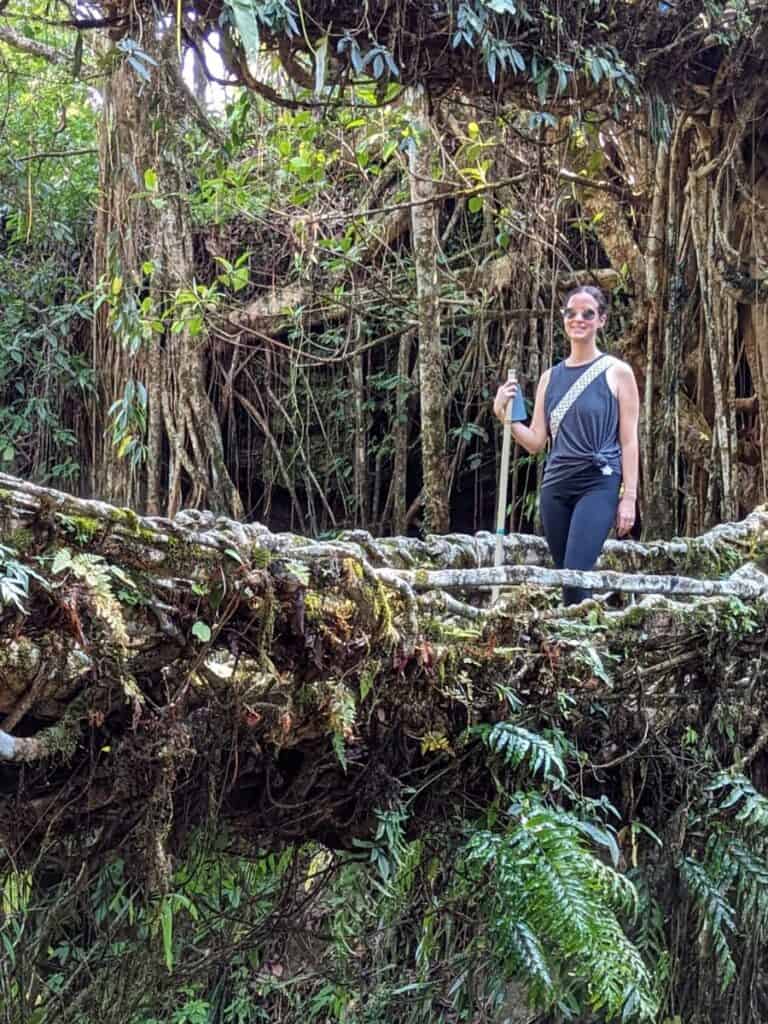
TLDR: Hike to the Living Root Bridges, Meghalaya
The hundreds of years old Living Root Bridges in Meghalaya are a very cool sight to behold. Plan for about 5-6 hours to hike all the way to the double decker living root bridge in the Village of Nongriat and back. While the hike isn’t easy due to the 3500+ steps, you’ll enjoy all the beautiful nature surrounding the trail through the trek.

